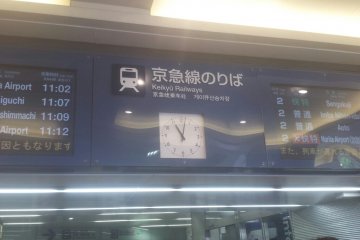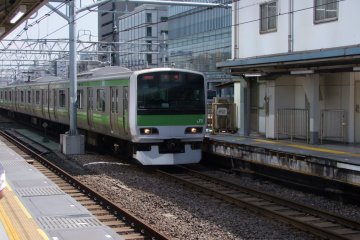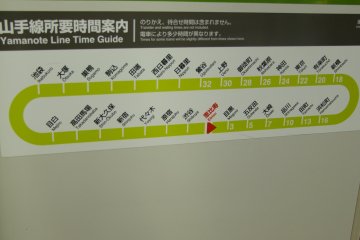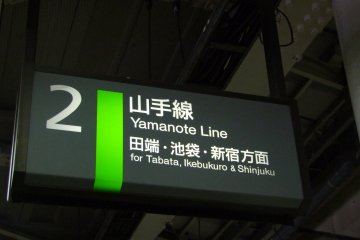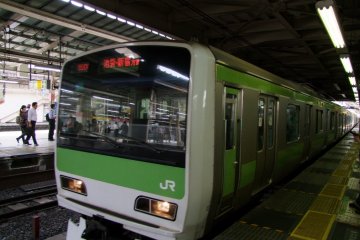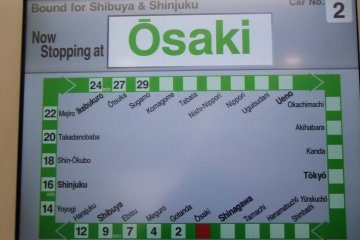The human body has a system of veins and arteries that takes blood from the heart, moves it everywhere it needs to go, and then brings it back to the heart again. Tokyo has a circulatory system too, and it’s called the Yamanote Line. The lime-green trains keep the city moving and functioning. Without it, we’d all be lost.
JR’s loop line is an iconic piece of Tokyo’s famed transportation system. The Yamanote Line runs in a big circle around the Japanese capital, and stops at nearly every major point in the city, from shopping centers to business areas.
There are 29 stations around the 34.5 km track of the Yamanote Line (a 30th got approval in 2012, with plans to be ready in time for the 2020 Tokyo Olympic Games). Trains run both clockwise and counter-clockwise around the loop, and come at intervals between every 2.5 minutes (during rush hour) and 4 minutes (at quieter times of day), meaning it would take you 59 to 65 minutes to complete a full loop, if you were so inclined. Every train stops at every station – there are no express trains.
Yamanote Line: Notable stops
The Yamanote Line takes visitors to most of the major locales around Tokyo. Some of the major stops include:
- Shinjuku: the brightly lit-up up commercial and social center of the city. Come here for shopping, entertainment, eating, drinking, and lots of nightlife.
- Harajuku: Takeshita Street is the home of the fashion-forward and eccentric appearances that make Tokyo famous, while Omotesando is one of the city's most exclusive (and expensive) places to be. Also the most popular gateway to Tokyo's Yoyogi Park.
- Shibuya: the heart of youth culture. Like Shinjuku, but with a younger, hipper vibe and lots of nightclubs. Also home to Shibuya Crossing, the famed scramble crossing that is the world's biggest.
- Tokyo: the financial and business center of the city, as well as some great history and easy access to the Imperial Palace.
- Akihabara: otaku central. This is the home of countless electronics stores, video game shops, maid cafes and merchandise shops to satisfy the biggest anime- or manga-lover.
- Ueno: the arts and culture center of the city. With more museums than you know what to do with, a gorgeous park that includes the famous Ueno Zoo, and the Ameyoko street market shopping district.
- Ikebukuro: shopping, shopping, and more shopping. In addition to the massive Sunshine City shopping mall (and observation tower and aquarium and planetarium and...), it is also home to the Seibu and Tobu Department Stores, some of the largest in the city.

Yamanote Line facts
Here's some Yamanote Line facts to amaze your friends with: the Yamanote Line's predecessor was put into use all the way back in the year 1885, and later merged with other lines to complete the loop. The current incarnation of the line was started in 1956. Seats on the train used to be able to fold up to allow for more people during the morning commute, but that came to an end in 2010. Written in Japanese, the name of the Yamanote Line is technically read as "Yama-te," with the "no" being inserted in speech only. In the past, both "Yamate" and "Yamanote" were used up until 1971, when "Yamanote" became the official pronunciation (which is reflected in all the English signage today).
The Yamanote Line: live it, learn it, love it. If you're in Tokyo for any time at all, it will be an indispensable part of your daily life.





